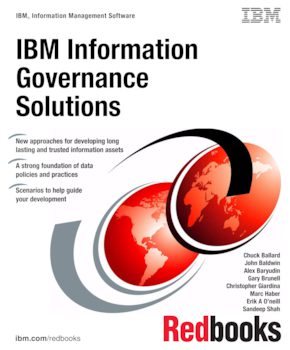Abstract
Managing information within the enterprise has always been a vital and important task to support the day-to-day business operations and to enable analysis of that data for decision making to better manage and grow the business for improved profitability. To do all that, clearly the data must be accurate and organized so it is accessible and understandable to all who need it.
That task has grown in importance as the volume of enterprise data has been growing significantly (analyst estimates of 40 - 50% growth per year are not uncommon) over the years. However, most of that data has been what we call "structured" data, which is the type that can fit neatly into rows and columns and be more easily analyzed. Now we are in the era of "big data." This significantly increases the volume of data available, but it is in a form called "unstructured" data. That is, data from sources that are not as easily organized, such as data from emails, spreadsheets, sensors, video, audio, and social media sites. There is valuable information in all that data but it calls for new processes to enable it to be analyzed.
All this has brought with it a renewed and critical need to manage and organize that data with clarity of meaning, understandability, and interoperability. That is, you must be able to integrate this data when it is from within an enterprise but also importantly when it is from many different external sources.
What is described here has been and is being done to varying extents. It is called "information governance." Governing this information however has proven to be challenging. But without governance, much of the data can be less useful and perhaps even used incorrectly, significantly impacting enterprise decision making. So we must also respect the needs for information security, consistency, and validity or else suffer the potential economic and legal consequences. Implementing sound governance practices needs to be an integral part of the information control in our organizations.
This IBM® Redbooks® publication focuses on the building blocks of a solid governance program. It examines some familiar governance initiative scenarios, identifying how they underpin key governance initiatives, such as Master Data Management, Quality Management, Security and Privacy, and Information Lifecycle Management. IBM Information Management and Governance solutions provide a comprehensive suite to help organizations better understand and build their governance solutions. The book also identifies new and innovative approaches that are developed by IBM practice leaders that can help as you implement the foundation capabilities in your organizations.
Table of Contents
Chapter 1. Information Governance: foundations and solutions
Chapter 2. Information Governance organizational structures
Chapter 3. Business definitions and policies in InfoSphere Information Server
Chapter 4. Workflows and business specifications
Chapter 5. Metrics and measurements
Chapter 6. Business drivers for information governance
Chapter 7. Data Quality
Chapter 8. Information Lifecycle Management
Chapter 9. Test data management
Chapter 10. Master Data Management
Chapter 11. Data protection and security scenario
Appendix A. Additional material
